| Jul 08 |
Archive for the 'Myths, legends, folklore' CategoryWhat Lari Wrote Next…I have a bit of a traffic jam of books waiting to be published over this summer and autumn. Girls, Goddesses and Giants: Tales of Heroines from Around the World (A&C Black, July 2013)
Masha and the Bear is about a little girl who gets lost in the forest, then gets trapped by a bear in a cave. But she doesn’t need a woodcutter or hunter to save her, she gets home all on her own using brains and baking skills! The Hungry Wolf is about a wolf who wants to eat a little lamb, and about all the ways the tricky little lamb fools the wolf and saves herself. It’s a combination of many of my favourite trickster tales, and was great fun to write! Breaking The Spell: Stories of Magic and Mystery from Scotland (Frances Lincoln, September 2013) The Magic Word (Picture Kelpies, September 2013) Winter Tales: Winter Stories from Around the World (A&C Black, October 2013) And next year? Floris Books are bringing out the first three novels in their new young adult list, TeenKelpies, and I’m delighted to say that my next novel will be one of them! |
| Jun 03 |
Archive for the 'Myths, legends, folklore' CategoryIn which I wonder what kind of writer I am…I think I’m a novelist, who writes adventure books like First Aid for Fairies, Rocking Horse War and Maze Running. |
| Apr 14 |
Archive for the 'Myths, legends, folklore' CategoryThis weekend’s difficult writing questionsHere’s the list of questions I’ve been asking myself over the weekend: |
| Nov 19 |
Archive for the 'Myths, legends, folklore' CategoryWhy retelling old stories is scary (and it’s not because of the wolf’s sharp teeth…)Retelling an old story which everyone already knows is a bit scary; retelling an old story almost no-one knows is even more of a responsibility. My first retelling of a well-known fairy tale – Little Red Riding Hood – has just been published. When I was writing it, I had to decide which bits of the many versions of Little Red I would weave together. I did a lot of research, then chose the elements which were most vivid and which worked best in my voice. So I hope I’ve retold a story which you will recognise, but which will also surprise you. A journalist recently asked me how I had changed the story, what spin or twist I had put in, but that wasn’t what I was aiming to do with this retelling. Every major plot element comes from one of the older tales, though I have told the story in my own words, and I’ve tried to make a few of the things which never made sense to me (why doesn’t she realise it’s a wolf in the bed, not her granny, for goodness sake? Can’t she tell the difference?) seem more plausible (she sees more of the wolf each time she lets extra light into the room: opening the curtains, lighting the fire etc.) But it’s a huge responsibility retelling a story like Little Red Riding Hood. Children already know it, and if you write something which differs from the version they know, they might think it’s wrong! (Which can prompt interesting discussions with kids about how traditional stories are passed on and changed.) Also, this book, with Celia Chauffrey’s gorgeous pictures, might over the years become some children’s very first experience of Red Riding Hood, so when they read other versions they might think my version is the right one and other versions are wrong… That’s a big and scary responsibility! But I’m very glad that this story of a tricksy, talking, toothy, people-eating wolf is a story most children already know. Because if they didn’t, they’d probably find it far too scary and gory to enjoy it! I’m now also retelling some stories which aren’t so well known: six animal tales from around the world (two already published, about a tortoise and a tiger, another four in the next couple of years, including a bear and a fox); a collection of Scottish folktales (coming out next summer, which contains stories I’ve never seen in other illustrated collections); and a collection of heroine stories from around the world (most of which are very obscure.) And that’s a completely different kind of responsibility. Because I do change stories when I tell them out loud. I deliberately change them so they make sense in my head, so they work in my voice, so they are dramatic in the way that I like a story to grab and hold the attention of an audience. Therefore the story I tell is never exactly as it was when it was written down, a hundred, a thousand or four thousand years ago. And that story, the one I tell out loud, the one I’ve changed to become my story, is the one I write down. I’m always quite honest about that, but now these versions are being printed and published, available on paper for anyone to read, forever… that is a serious responsibility. With Little Red Riding Hood, if I make a minor change, I know that kids will see another half dozen versions over the course of their reading lives, they will compare those different versions, realise there are many ways to tell a story and decide which is their favourite. But when they read my retellings of the untrustworthy Korean tiger or the Witch of Lochlann or Inanna tricking the god of wisdom, they might never see that story anywhere else. My version will be the only version they know. And that’s a really heavy responsibility. But I’m not worrying too much about it. These are great stories, I’m writing them as well as I know how, I’m really excited about sharing them and I want you to enjoy reading them. Then if you want to study them more deeply by reading the ancient originals, I’m quite happy to point you in the right direction! Here is the gorgeous front cover of LRRH, and I’ll update on you on the other retellings nearer the time! |
| Jul 26 |
Archive for the 'Myths, legends, folklore' CategoryWhy I love taking books, readers and stories out of doors…I’m not long back from the most memorable and fun Maze Running event I’ve done yet. |
| Jan 23 |
Archive for the 'Myths, legends, folklore' CategoryHappy Year of the Dragon!The start of the Year of the Dragon has made me think about dragons. Though I don’t really need to be encouraged to think about dragons – the book I’m deep in the middle of editing has seven speaking dragon parts, and any number of minor spear-carrying dragons. But this seems like a good time to celebrate other people’s dragons too! My favourite dragon books include: The wonderful heartrending dragon in CS Lewis’s The Voyage of the Dawn Treader, which is my earliest dragon memory. The amazing How to Train Your Dragon series by Cressida Cowell, the funniest, cleverest, most exciting series of dragon books ever. Though I’m not sure I’d want Toothless under my helmet. Philip Reeves’ No Such Thing As Dragons, which is dark, spiky, tantalisingly short, and a fabulous novel for slightly older readers. And the very similarly titled, but for much smaller people: There’s No Such Thing As A Dragon by Jack Kent. I also love the splendidly distant dragons in Vivien French’s Flight of Dragons. I have mixed feelings about Eragon and its sequels, partly because they are almost too big to hold, but also because I thought I’d been really original, creating a friendly female dragon, making her blue and calling her Sapphire. Then shortly after First Aid for Fairies was published, I read Eragon, and met his friendly blue female dragon, called Saphira. I’m very relieved about that final vowel. I have a couple of favourite dragon reference books too (I’m not sure if you can call them non-fiction!) My first dragon collection was A Book of Dragons, edited by Roger Lancelyn Green (though I see it has my wee brother’s name on the first page, in pencil. Perhaps I could rub that out, because he’s not getting it back now!) And more recently, I’ve loved the wonderful tactile Dragonology books by Dr Ernest Drake (which aren’t mine either – they belong to my kids.) And finally, my favourite dragon myths. I’ve enjoyed telling dragon myths for years, partly because they come with inbuilt excitement (a dragon! fire! teeth!), partly because they come from all over the world, and partly because it feels right to share dragon stories when I’m doing author sessions about the novels with Sapphire in them. My favourite dragon stories to share include: A seven-headed Chinese dragon A Greek dragon who kept a shepherd boy company on the hills A Viking dragon defeated by a sheepskin A Polish dragon, also defeated by a sheepskin (some dragons are easily fooled) A Persian dragon who teased a horse A Georgian dragon who was sung to sleep And an Irish dragon who lost his tongue (If you want to find out more about these dragons, you’ll have to ask me to come and tell you the stories!) Dragons are universal, appearing as the monster of choice in many cultures and countries, so I’m fascinated by theories about where our dragon stories come from. Do we need monsters for our heroes to prove themselves against? Did our ancestors need explanations for those big fossilised bones and teeth? Or maybe, just maybe, these stories are about real dragons, and they’re still out there, somewhere… What are your favourite dragon books and stories? Please let me know! (And here is the dragon who sits beside my computer – hand made for me by a Sapphire fan!)
|
| Oct 02 |
Archive for the 'Myths, legends, folklore' CategoryYou and whose army?I’ve been worrying about minions recently. I know the baddy for the next book, I’ve been working out his evil plan for a while, but I’ve been struggling with his minions. He’s a loner, you see, the only one of his kind, so he doesn’t have a ready-made band of followers or family like the Faery Queen had her footsoldiers in Wolf Notes or the Sea-through had his bloom of jellyfish in Storm Singing. I kept thinking that I was getting stuck at an early piece of action in First Aid Four because I couldn’t see the next location (one of the dangers of a location competition – you have to wait until you’ve got the winner to write the next bit.) Now I’ve realised the problem was that I couldn’t see who or what was with the baddie, I couldn’t see who was attacking Helen and Yann. So all I have to do is find out who his army are, then the action can rattle on again. I need some minions. I asked the kids I met at the Wigtown Book Festival today if they could suggest any good minions, and got some truly splendid answers including fireproof snails, secret agent rabbits and haggises with fangs, which may not be perfect for a Fabled Beast adventure, but certainly got me thinking. Mostly thinking about what makes a good minion. Sneaky? Smaller than the boss? Violent but not deadly? Daft? (Or cleverer than the boss? I think either works…) Lots of them, so you can lose a few? And specifically, what do I want for this book? Probably creatures from Scottish myth and folklore, and preferably ones who haven’t had starring roles in too many other books. So, if you have a perfect minion’s job description, or if you have any excellent minions you could suggest to carry out my evil plan, do let me know. Otherwise, I’ll just ask a few more kids, or else get in about my collection of Scottish folklore as soon as I get home … |
| Sep 21 |
Archive for the 'Myths, legends, folklore' CategoryAnyone got a favourite Roman myth?I’ve promised to tell a Roman myth next week to a group of school kids, but I don’t know any Roman myths which I love enough to share! I always tell myths in my author sessions, because I use mythological beasts in my adventure books, and this class particularly requested a Roman myth to link with their project on the Romans. So I said yes, no problem, even though most of the myths I love are Greek or Viking or Sumerian. I didn’t think it was a rash promise, because I have a tatty old illustrated hardback book called “Roman Mythology.” Having started twittering yesterday, I thought I’d get back to paper and ink basics this morning, so I opened Roman Mythology, and found a lot of history, a fair amount of archaeology, dozens of pictures of statues and a few oblique mentions of myths, but no actual stories. Nothing with a beginning, a middle and an end. No monsters defeated, no heroes or heroines created. Leaving me with only a few Roman possibilities: the wolf suckling the twins (which doesn’t take that long to tell), Horatio on the bridge (which glorifies very stupid bravery) and the loss of the Ninth Legion in the mists of Scotland (which is apparently not true any more, even though it was true when I was wee). So have you got any better ones? Any genuinely exciting and surprising Roman myths? The Romans did nick most of their gods, goddesses and myths from the people they conquered. So getting ideas from everyone out there seems rather appropriate. And I won’t even have to invade … |
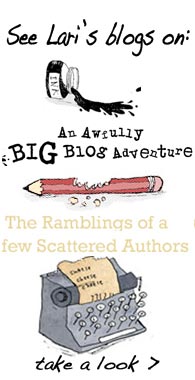
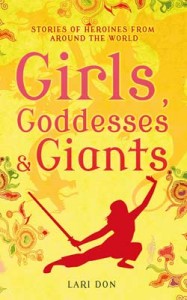
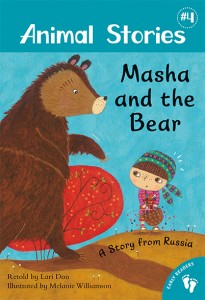
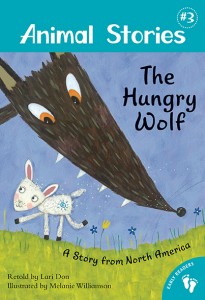
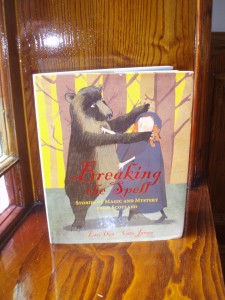
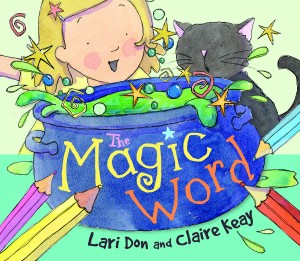
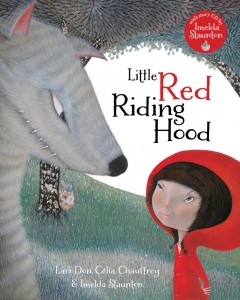
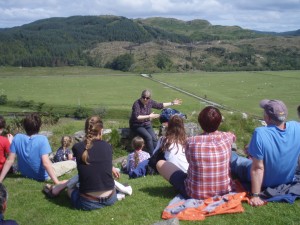
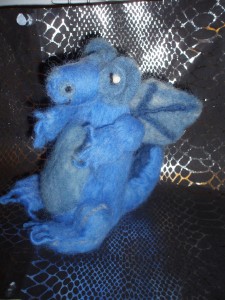
Recent Comments